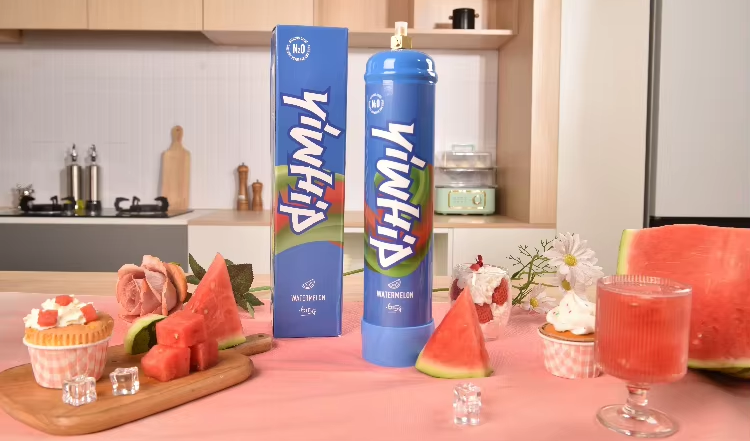Introduction: A New Star in the American Kitchen
Not long ago, kitchens in American households seemed dominated by staples—mixers, blenders, food processors. But lately, one surprisingly small kitchen device has captured the attention of home bakers and dessert lovers alike: the whipped cream canister. With its sleek metal finish, convenient one-press application, and promise of perfectly aerated creams and foams every time, this once-obscured tool is now becoming **a must-have kitchen appliance**, found tucked away in cabinets and countertops across America. But what is causing this sudden rise? Let’s explore.
The Rise in Popularity: From Commercial Tool to Households
This trend isn’t born from thin air—its origins lie in commercial environments like cafés, bakeries, and gourmet kitchens where speed and consistency were imperative. For decades, chefs have used nitrous oxide-charged whipped cream dispensers—commonly called siphons—to whip up fresh batches of flavored cream with minimal effort. Now, these same principles are entering the average household thanks to more compact, durable, and user-friendly models designed for domestic use.
Sales statistics tell a compelling story—one industry study notes a significant spike in retail sales of whipped cream canisters since early 2021. **Online recipe tutorials incorporating the canisters** soared by an astonishing 67% over two years. In essence, they’ve been pulled into mainstream culinary culture through TikTok trends, Instagram-worthy plated desserts, and high-end food blogs highlighting convenience as the holy grail.
Why Are Consumers Making the Switch?
Demand for ease, elegance, and innovation is at the heart of this change. Americans, particularly post-pandemic, value quick and stylish food presentation even within the home environment. Canisters eliminate labor-intensive whisking or reliance on canned spray creams packed with additives. By simply shaking and spraying fresh dairy-based whipped cream, users maintain full control of ingredient quality without any compromise in convenience or visual appeal.
- Better control of flavors and fat contents compared to traditional spray canisters.
- Reduction in mess due to leakproof sealing technology.
- Custom-designed reusable systems—replacing single-use aerosol cans.
From busy families crafting birthday cakes in under ten minutes, to urban millennials experimenting with coffeehouse aesthetics from their barista station setup—these products fulfill an emotional and functional need that other appliances do not easily accommodate.
Cooking Creativity Takes Flight: New Applications and Uses
Gone are the days when whipping cream was merely topping a berry sundae or a slice of apple pie. Chefs—amateur and professional—are finding inventive ways to harness these devices in new gastronomic territory.
The cream canisters, when paired with alternative gases (such as carbon dioxide), allow for creating foam textures using liquids ranging from pureed tomatoes to coconut milk reductions. Some daring innovators even infuse sauces or create cold, airy soufflés without conventional oven heat—a testament to the expanding creativity unleashed by **this once one-purpose gadget turning into a kitchen chameleon.**
Innovations That Set Brands Apart in the Market
Fueled by demand and curiosity alike, a flood of startups, along with legacy appliance manufacturers, are investing heavily in refining product design. Innovations range from ergonomic pressure valves and smart canister alerts signaling gas depletion to interchangeable nozzles for fine versus wide-dash texture delivery. These aren't just aesthetic tweaks—they're serious advancements aimed at enhancing usability and extending shelf-life while ensuring maximum hygiene compliance.
Eco-aware consumers also welcome developments like BPA-free materials, recyclable cartridges, or refill systems offering bulk purchase benefits over wasteful aerosols. Leading brand **ChurnCraft** recently released a "zero emissions" line, emphasizing sustainability without skimping on performance—an aspect especially valued among younger North American audiences.
Challenges Facing This Cream Revolution
Rapid expansion often brings complications—safety standards vary widely globally; inexperienced users sometimes mishandle canisters leading to minor injuries from pressure releases or misattached caps. Regulators such as those in the European Food Safety Authority are tightening inspection procedures, calling for clearer safety warnings on packaging to prevent misuse, particularly important if being operated in non-commercial homes where proper handling protocols may be lacking.
Beyond legal hurdles are psychological ones. Despite their versatility, some remain skeptical: "It feels too much like industrial machinery for my home," says Lila Torres, mother of two living in Salt Lake City. It’s precisely that perception that marketing experts now focus on altering by showcasing elegant designs integrated neatly into breakfast counters beside stand mixers.
If there's an underlying truth about trends, it's how dependent they are on peer adoption. And with platforms like **YouTube baking challenges featuring whipped cream dispensers going viral**, and celebrities like Martha Stewart giving nods on lifestyle shows, adoption seems unstoppable—if carefully nurtured.
Conclusion: A Whipped Cream Revolution Worth Stirring Over
To conclude, it might seem implausible—that something as seemingly niche as a stainless steel cream siphon could spark nationwide interest—but context reveals otherwise. As lifestyles evolve, expectations for convenience, presentation, flexibility, and flavor all grow alongside them.
The whipped cream dispenser is symbolic not of indulgence alone but efficiency combined seamlessly with creative flair in the modern kitchen era.
For countries like North Macedonia where rich confections play a cherished role—especially around festive periods—it's worth paying attention. Perhaps local culinary innovators and entrepreneurs should examine whether these cream canisters present both a consumer opportunity and an avenue for reimagining regional pastry art forms for a world increasingly drawn to fast sophistication over slow simplicity.
The “Churning Success" we speak of doesn't end with cream—it represents evolving tastes shaped by culture shifts and innovations quietly taking root in corners as modest as our own refrigerators.

